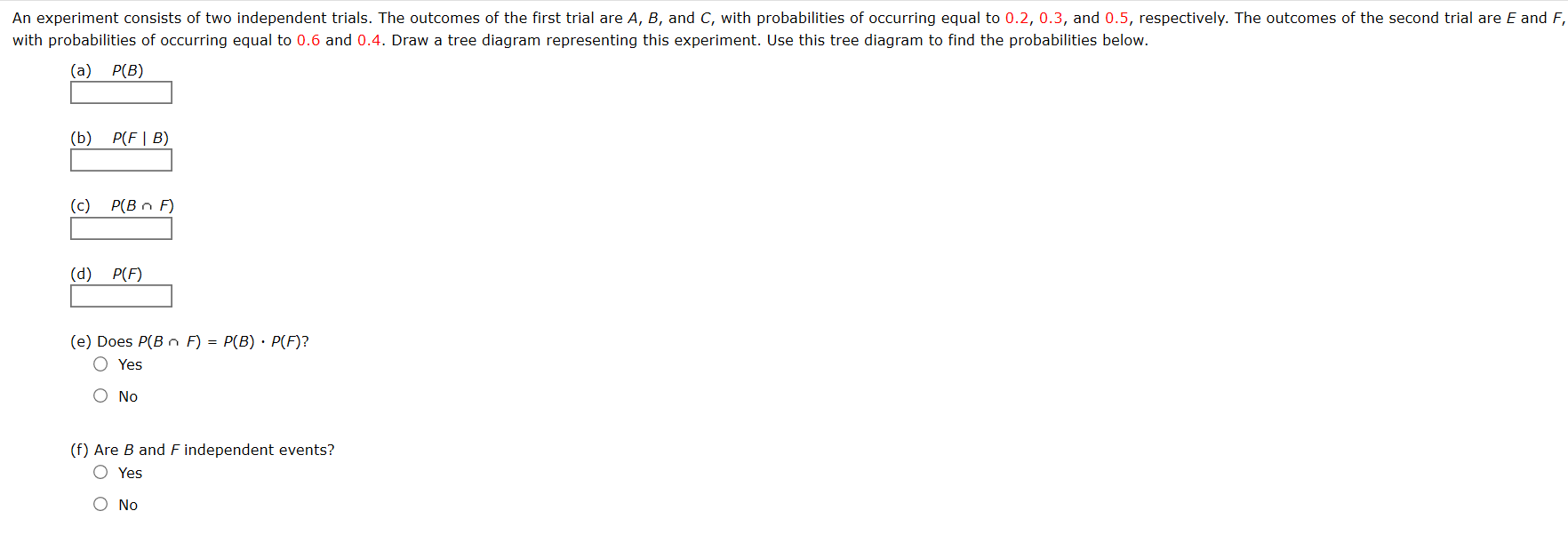An experiment consists of two independent trials. The outcomes of the first trial are A, B, and C, with probabilities of occurring equal to 0.2, 0.3, and 0.5, respectively. The outcomes of the second trial are E and F, with probabilities of occurring equal to 0.6 and 0.4. Draw a tree diagram representing this experiment. Use this tree diagram to find the probabilities below. (a) P(B) (b) P(F | B) (c) P(B n F) (d) P(F) (e) Does P(B n F) = P(B) • P(F)? Yes No (f) Are B and F independent events? O Yes O No
An experiment consists of two independent trials. The outcomes of the first trial are A, B, and C, with probabilities of occurring equal to 0.2, 0.3, and 0.5, respectively. The outcomes of the second trial are E and F, with probabilities of occurring equal to 0.6 and 0.4. Draw a tree diagram representing this experiment. Use this tree diagram to find the probabilities below. (a) P(B) (b) P(F | B) (c) P(B n F) (d) P(F) (e) Does P(B n F) = P(B) • P(F)? Yes No (f) Are B and F independent events? O Yes O No
Chapter8: Sequences, Series,and Probability
Section8.7: Probability
Problem 50E: Flexible Work Hours In a recent survey, people were asked whether they would prefer to work flexible...
Related questions
Question

Transcribed Image Text:An experiment consists of two independent trials. The outcomes of the first trial are A, B, and C, with probabilities of occurring equal to 0.2, 0.3, and 0.5, respectively. The outcomes of the second trial are E and F,
with probabilities of occurring equal to 0.6 and 0.4. Draw a tree diagram representing this experiment. Use this tree diagram to find the probabilities below.
(a)
P(B)
(b)
P(F | B)
(c)
P(B n F)
(d)
P(F)
(e) Does P(B n F) = P(B) • P(F)?
Yes
No
(f) Are B and F independent events?
O Yes
O No
Expert Solution
This question has been solved!
Explore an expertly crafted, step-by-step solution for a thorough understanding of key concepts.
This is a popular solution!
Trending now
This is a popular solution!
Step by step
Solved in 2 steps with 2 images

Recommended textbooks for you

